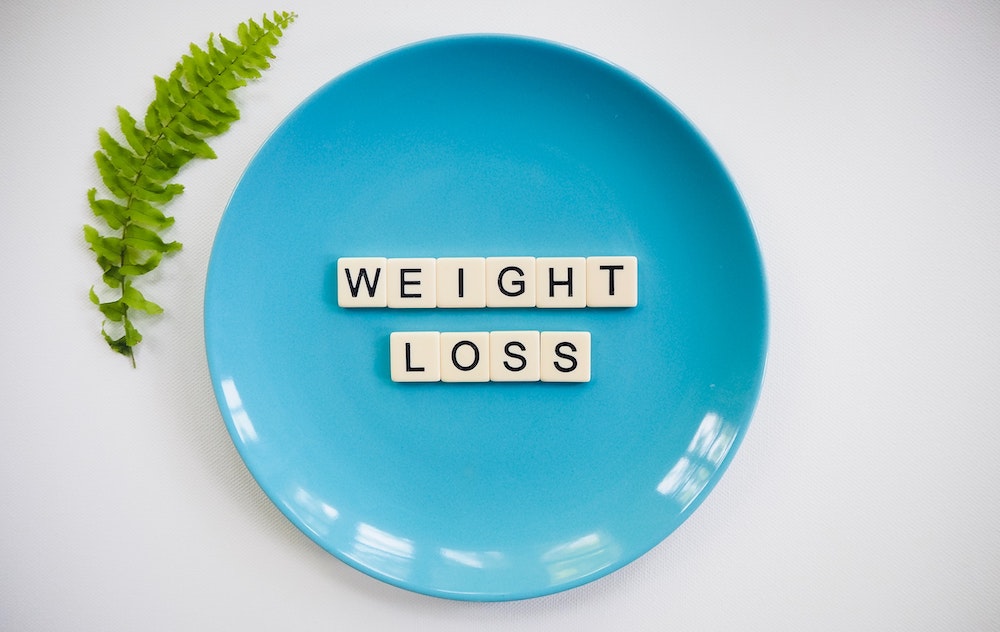Southern European Atlantic Diet Benefits for Longevity and Beyond

For decades, the Mediterranean Diet has been praised for its health benefits. It's no wonder it has become one of the most popular diets in the world.
But what is less known is that within the Mediterranean Diet, there is a particular type of diet called the Southern European Atlantic Diet (SEAD).
SEAD is based on traditional food, and dietary habits passed down through generations living along the coasts of Portugal, Spain, Morocco, and parts of France.
This diet focuses on whole foods, fresh vegetables, seafood, and heart-healthy fats like olive oil. This blog post will discuss the numerous benefits of eating according to SEAD principles for longevity and beyond.
What is the Southern European Atlantic Diet?
The Southern European Atlantic Diet is rich in seafood, vegetables, and olive oil. This diet has been associated with increased longevity and decreased risk of chronic diseases such as heart disease and cancer.
The diet is typically high in healthy fats, antioxidants, and omega-3 fatty acids, which are thought to promote good health.
The Different Types of Southern European Diets
The Different Types of Southern European Diets: The Four Major Types
There are four significant types of southern European diets. They are the traditional Mediterranean diet, the Andalucian diet, the Cretan diet, and the Sardinian diet.
- The traditional Mediterranean diet is based on the eating habits of people in Greece, Italy, Spain, and Morocco. This diet includes lots of fruits, vegetables, legumes, nuts, olive oil, and fish.
It also contains moderate amounts of dairy and red wine. This diet is low in meat and processed foods.
- The Andalucian diet is based on people's eating habits in Andalusia, southern Spain. This diet includes lots of vegetables, olive oil, legumes, and fish.
It also contains moderate amounts of poultry, cheese, and red wine. This diet is low in meat and processed foods. - The Cretan diet is based on people's eating habits in Crete, Greece. This diet includes lots of fruits, vegetables, Olive oil, and fish.
It also includes moderate amounts of legumes, dairy, and wine. This diet is low in meat and processed foods - The Sardinian Diet is based on the eating habits of people living on the island of Sardinia off the coast of Italy. This type of DIY includes lots of whole wheat bread, vegetables, legumes, and fruit
Pros and Cons of a Southern European Diet
A Southern European diet is typically high in olive oil, fruits, vegetables, legumes, and fish. This way of eating has been associated with lower rates of heart disease, cancer, and other chronic illnesses.
There are some potential drawbacks to following a Southern European diet, however. For example, it can be high in saturated fats and salt.
And if you're not used to eating a lot of seafood, you may find the taste and smell off-putting.
If you're considering making changes to your diet to improve your health, you must talk with your doctor or a registered dietitian first. They can help you create a plan that meets your individual needs and lifestyle.
What Foods to Eat on a Southern European Diet?
When it comes to eating a healthy diet, the benefits of a Southern European diet are hard to beat. Filled with fresh fruits and vegetables, seafood, olive oil, and whole grains, this way of eating has been linked with longevity and a reduced risk of chronic disease.
If you're looking to improve your health and enjoy delicious food at the same time, here are some of the best foods to eat on a Southern European diet:
- Fruits and vegetables: Tomatoes, peppers, eggplants, squash, leafy greens, potatoes, oranges, lemons, grapes
- Seafood: Fish, shellfish, squid, octopus
- Olive oil: Use for cooking or as a salad dressing
- Whole grains: Bread made with whole wheat flour, barley, farro
Recipes from a Southern European Diet
The recipes below are all staples of a traditional Southern European diet, which has been linked with improved longevity and overall health. This way of eating is rich in healthy fats, seafood, vegetables, and whole grains and low in processed foods and red meat.
These recipes will give you a taste of the delicious and nutritious food that makes the Southern European diet so beneficial.
- Olive Oil-Poached Salmon: This healthy and flavorful salmon dish is cooked in olive oil, a staple of the Southern European diet. The fish is then served with fresh lemon juice, parsley, and capers for a bright and zesty flavor.
- Mediterranean Vegetable Soup: This soup is packed with nutrients from fresh vegetables like tomatoes, zucchini, eggplant, and spinach. It's flavored with garlic, herbs, and olive oil for a hearty and healthy meal.
- Tuscan White Bean Salad: This simple salad is made with white beans, cherry tomatoes, red onion, basil, and olive oil. It's a great side dish or light lunch option full of flavor and nutrients.
- Paella: This classic Spanish dish is made with rice, seafood (usually shrimp), chicken, sausage, vegetables (like peas), and spices. It's a hearty and filling meal that's perfect for sharing with family or friends.

Alternatives to the Southern European Diet
The traditional Southern European diet has been shown to have numerous benefits for overall health and longevity.
However, many alternative diets can also provide these same benefits.
The following are some of the most popular alternatives to the Southern European diet:
The Mediterranean Diet: The Mediterranean diet is very similar to the Southern European diet and is just as effective in promoting health and longevity. This diet focuses on eating plenty of fruits, vegetables, whole grains, legumes, fish, and olive oil.
The Nordic Diet: The Nordic diet is another option for those looking for an alternative to the Southern European diet. This diet emphasizes eating plenty of fresh fish, lean meats, fruits, vegetables, and whole grains.
The vegetarian/vegan Diet: A vegetarian or vegan diet can also be a healthy option for those looking for an alternative to the Southern European diet. This diet focuses on eating plenty of fruits, vegetables, legumes, and whole grains.
The Paleolithic Diet: The Paleolithic diet is based on the foods our hunter-gatherer ancestors ate during the Paleolithic era. This diet includes fresh meats, fruits, vegetables, nuts, and seeds.
The DASH Diet: The DASH (Dietary Approaches to Stop Hypertension) diet is an excellent option for improving cardiovascular health.
Frequently Asked Questions
What is the Southern European Atlantic Diet (SEAD)?
The Southern European Atlantic Diet is a dietary plan centered around the traditional eating habits of the coastal regions of Portugal, Spain, Morocco, and parts of France. It's rich in seafood, vegetables, whole foods, and olive oil, and has been associated with increased longevity and a decreased risk of chronic diseases such as heart disease and cancer.
What are the different types of Southern European Diets?
There are four major types of Southern European Diets: the traditional Mediterranean diet, the Andalucian diet, the Cretan diet, and the Sardinian diet. All these diets focus on consuming fruits, vegetables, olive oil, fish, legumes, moderate amounts of dairy and red wine, while limiting the intake of meat and processed foods.
What are the pros and cons of a Southern European Diet?
A Southern European diet is linked with lower rates of heart disease, cancer, and other chronic illnesses due to its high content of olive oil, fruits, vegetables, legumes, and fish. However, it may be high in saturated fats and salt. Also, the diet is rich in seafood, which may not suit everyone's taste.
What foods should I eat on a Southern European Diet?
The Southern European diet emphasizes on fruits and vegetables like tomatoes, peppers, eggplants, squash, leafy greens, potatoes, oranges, lemons, grapes; seafood such as fish, shellfish, squid, octopus; olive oil, and whole grains like bread made with whole wheat flour, barley, farro.
What are some examples of recipes from a Southern European Diet?
Some traditional Southern European recipes include Olive Oil-Poached Salmon, Mediterranean Vegetable Soup, Tuscan White Bean Salad, and Paella.
What are some alternatives to the Southern European Diet?
Some alternatives to the Southern European diet include the Mediterranean Diet, the Nordic Diet, Vegetarian/Vegan Diet, the Paleolithic Diet, and the DASH (Dietary Approaches to Stop Hypertension) Diet.
Is the Southern European Diet suitable for everyone?
The Southern European diet can be a good choice for many people due to its focus on balanced, nutrient-rich foods. However, individual dietary needs vary, so it's important to talk to a healthcare provider or registered dietitian before making significant changes to your diet.
Does the Southern European Diet allow the consumption of alcohol?
Moderate consumption of red wine is typically included in the Southern European diet due to its potential heart-healthy benefits. However, moderation is key, and it's important to consult with a healthcare provider for personalized advice.
How does the Southern European Diet contribute to longevity?
The Southern European Diet is rich in fruits, vegetables, fish, and olive oil - foods that are high in nutrients, antioxidants, and omega-3 fatty acids. These elements are known to promote overall health, aid in the prevention of chronic diseases, and contribute to increased longevity.
Are there any potential challenges when following the Southern European Diet?
The diet could be challenging for those not used to the taste and smell of seafood. Additionally, it can be high in saturated fats and salt, so it's important to balance intake and ensure diversity in food choices.
Interesting Facts
The Southern European Atlantic Diet originated from the coastal areas of Portugal, Spain, Morocco, and parts of France, with dietary habits passed down through generations.
The diet is known for its emphasis on seafood, which is rich in omega-3 fatty acids, essential for heart health.
Olive oil, a key component of this diet, is a good source of monounsaturated fats, which can help reduce levels of bad cholesterol.
The diet also heavily features legumes, which are an excellent source of plant-based protein and fiber.
This diet is not just about food. It also involves lifestyle habits like eating with family and friends, which contributes to mental health.
Related Studies
Adherence to a Mediterranean diet and survival in a Greek population.
This study affirmed that high adherence to the Mediterranean diet contributes to a significant reduction in total mortality.
Link: https://pubmed.ncbi.nlm.nih.gov/12757984/
Mediterranean diet and longevity: an example of nutraceuticals?
This study showcased the potential of the Mediterranean diet in promoting longevity through the reduction of chronic disease risk. Link: https://pubmed.ncbi.nlm.nih.gov/29481502/
The diet and 15-year death rate in the seven countries study.
This study confirmed that the Southern European diets, including the Mediterranean, contribute to lower mortality rates.
Link: https://pubmed.ncbi.nlm.nih.gov/8335871/
Mediterranean dietary pattern and prediction of all-cause mortality in a US population.
This study connected adherence to the Mediterranean dietary pattern with a significant reduction in mortality risk.
Link: https://pubmed.ncbi.nlm.nih.gov/15531663/
Adherence to the Mediterranean diet is associated with lower abdominal adiposity in European men and women.
This study linked adherence to the Mediterranean diet with lower abdominal fat, reducing the risk of cardiovascular diseases.
Link: https://pubmed.ncbi.nlm.nih.gov/18682372/
Conclusion
The Southern European Atlantic Diet is a great way to ensure a healthy, balanced lifestyle without making too many drastic changes to your current diet. It offers many benefits for longevity and beyond that are sure to help keep you feeling young and healthy into old age.
If you're looking for ways to improve your health long-term, this may be the perfect answer! With its emphasis on fresh ingredients, plenty of fruits and vegetables, lean proteins, and whole grain carbohydrates, it's easy to see why the Southern European Atlantic Diet has become so popular in recent years.
Visit our website today! 🎉
We have a wide variety of articles, studies, and recipes on a variety of topics. We are sure you will find something that interests you.
So what are you waiting for? Visit our website today and start learning! 📖
